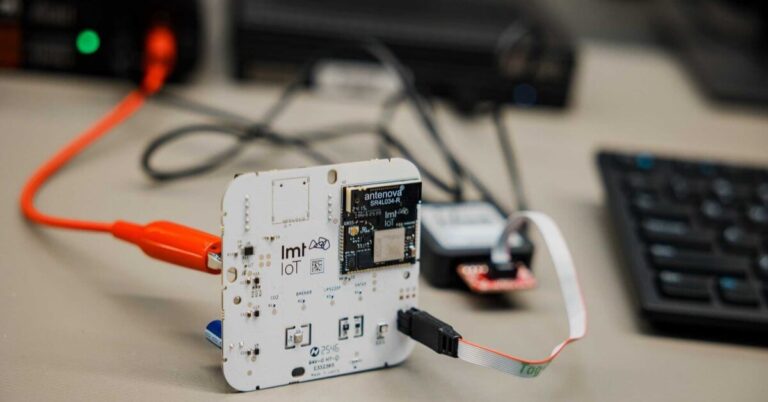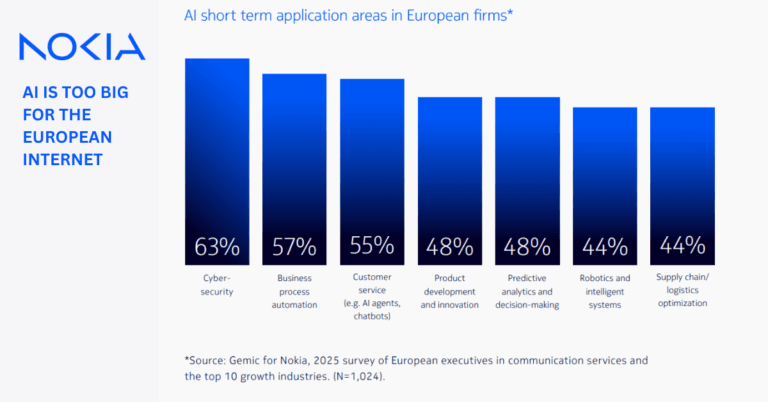Why This Partnership Elevates Utility Private 5G/LTE Security
Nokia’s tie-up with OneLayer brings carrier-grade security and OT-aware visibility into one stack, addressing the core adoption barrier for private 5G/LTE in utilities: protecting highly distributed, mission-critical operations at scale.
Grid Modernization with Private 5G/LTE
Utilities are moving from legacy RF and leased lines to private LTE/5G to support substation automation, AMI 2.0, DER integration, fault location/isolation/service restoration (FLISR), and mobile workforce use cases. Private cellular offers deterministic coverage, QoS, and mobility across wide service territories, outperforming Wi‑Fi in outdoor and high-interference environments. The challenge has been bringing enterprise-grade security and asset intelligence to cellular domains without forcing utilities to become cellular experts.
OT and Field Attack Surface in Private Cellular
The number of cellular-connected field devices—RTUs, reclosers, meters, cameras, and mobile endpoints—is surging under a single network umbrella. That improves telemetry and control but also increases exposure to lateral movement, credential abuse, rogue SIMs, and misconfiguration. Industry loss data shows a majority of incidents stem from external manipulation, while regulators and insurers are tightening expectations for segmentation, identity, monitoring, and incident response. Utilities need zero-trust principles embedded in the private cellular fabric, not just at the IP layer.
What Nokia and OneLayer Deliver for Utility Private Networks Security
The combined offering joins Nokia’s secure private wireless core and operations stack with OneLayer’s OT asset mapping and enforcement to implement zero trust across devices, radio, and transport.
Telco-Grade Core Security with Nokia NetGuard
Nokia brings its NetGuard portfolio to the private core: endpoint detection and response for core elements, security orchestration and automation (SOAR), privileged access controls, and certificate lifecycle management. This is designed for 3GPP-compliant private LTE/5G cores (including standalone 5G) and aligns with how carriers protect control and user plane functions. For utilities, the advantage is deterministic detection on the cellular control plane with automated playbooks that can quarantine, rotate credentials, or revoke access without taking down critical services.
OneLayer OT Asset Visibility and Zero-Trust Controls
OneLayer contributes deep device visibility and policy enforcement that bridges cellular identity (IMSI, IMEI, GUTI) to IP, MAC, and physical asset context used by OT and IT teams. Its platform discovers assets, correlates them to sites and functions, and applies controls such as micro-segmentation, geofencing, and anomaly detection tailored for field operations. Critically, it enables utilities to treat private cellular like another enterprise network—enforcing identity-based access, least privilege, and device hygiene—even when endpoints are constrained or intermittently connected.
Joint Zero-Trust Blueprint for Private Cellular Networks
Together, the companies deliver a zero-trust model that spans radio to application: authenticated device identity, continuous posture assessment, role-based segmentation at the cellular (DNN/QoS flow) and IP layers, and orchestrated mitigation. Features highlighted include asset discovery, micro-segmentation, geofencing, anomaly detection, and coordinated response. Integration with existing SOC tooling and identity systems enables unified policies and incident workflows across IT, OT, and cellular domains.
Strategic Implications for Private Cellular in Utilities
The partnership signals a maturation of private cellular from connectivity-first projects to security-led platforms that satisfy OT resilience, compliance, and operational efficiency goals.
Compliance, Resilience, and Cyber Insurance Pressures
North American utilities navigating NERC CIP, TSA directives, and increasing cyber underwriting requirements must demonstrate granular segmentation, credential and certificate governance, and incident response readiness. Embedding certificate management, privileged access control, and EDR at the core—plus enforceable micro-perimeters for field assets—helps translate policy into enforceable controls that auditors can verify and insurers can price against.
Operational Efficiency and Lifecycle Management for OT
OT teams need clear mapping between SIMs, endpoints, and physical locations to reduce truck rolls and mean time to respond. A unified inventory that ties cellular identifiers to device owners, firmware levels, and site topology enables safe change management (e.g., firmware updates, SIM swaps) and faster isolation of compromised assets. For multi-year AMI, DA, and substation programs, this reduces integration friction and supports predictable OPEX.
Ecosystem and 3GPP Standards Alignment
The solution aligns with 3GPP-compliant private LTE/5G cores and can ride alongside network slicing, RedCap endpoints, and evolving Release 17/18 features. Expect growing relevance as RedCap- and LTE-M-based meters and sensors proliferate, and as utilities consolidate disparate field networks onto unified private cellular footprints. Vendor alignment around zero-trust patterns should also simplify integration with SIEM/SOAR, PKI, and identity providers.
What to Watch and Next Steps for Utility Private Networks
Utility leaders should validate how this stack performs in their topology, integrates with existing controls, and scales with the device mix expected over the next five to seven years.
Near-Term Steps for Utilities Planning Private Networks
- Inventory and classify cellular-connected assets and map them to business-critical functions, sites, and owners.
- Define a zero-trust policy model for private LTE/5G: device identity, least-privilege segmentation by role/site, geofencing rules, and certificate governance.
- Pilot in a representative footprint (e.g., a set of substations plus a feeder and AMI segment) to validate asset discovery, policy enforcement, and incident playbooks across normal and degraded conditions.
- Integrate with SOC tooling: ensure telemetry and controls flow into your SIEM/SOAR, ticketing, and IAM; require clear mappings between cellular and IP identities.
- Establish measurable SLOs for detection, containment, and recovery that align with operational continuity targets.
Metrics and Proof Points to Demand from Suppliers
- Time to discover and classify new devices; accuracy of identity correlation (cellular to IP/OT asset).
- Policy granularity achievable at the cellular layer (DNN/APN, QoS flows) and ease of micro-segmentation changes.
- Mean time to detect and isolate compromised endpoints without service disruption to unaffected circuits.
- Certificate and credential lifecycle coverage for devices, applications, and admins across IT/OT.
- Compliance evidence generation for audits (config drift, access logs, incident traceability).
With utilities accelerating private LTE/5G rollouts, Nokia and OneLayer are packaging the controls that regulators, insurers, and boards now expect—bringing OT-aware zero trust into the cellular domain without adding operational complexity.








































